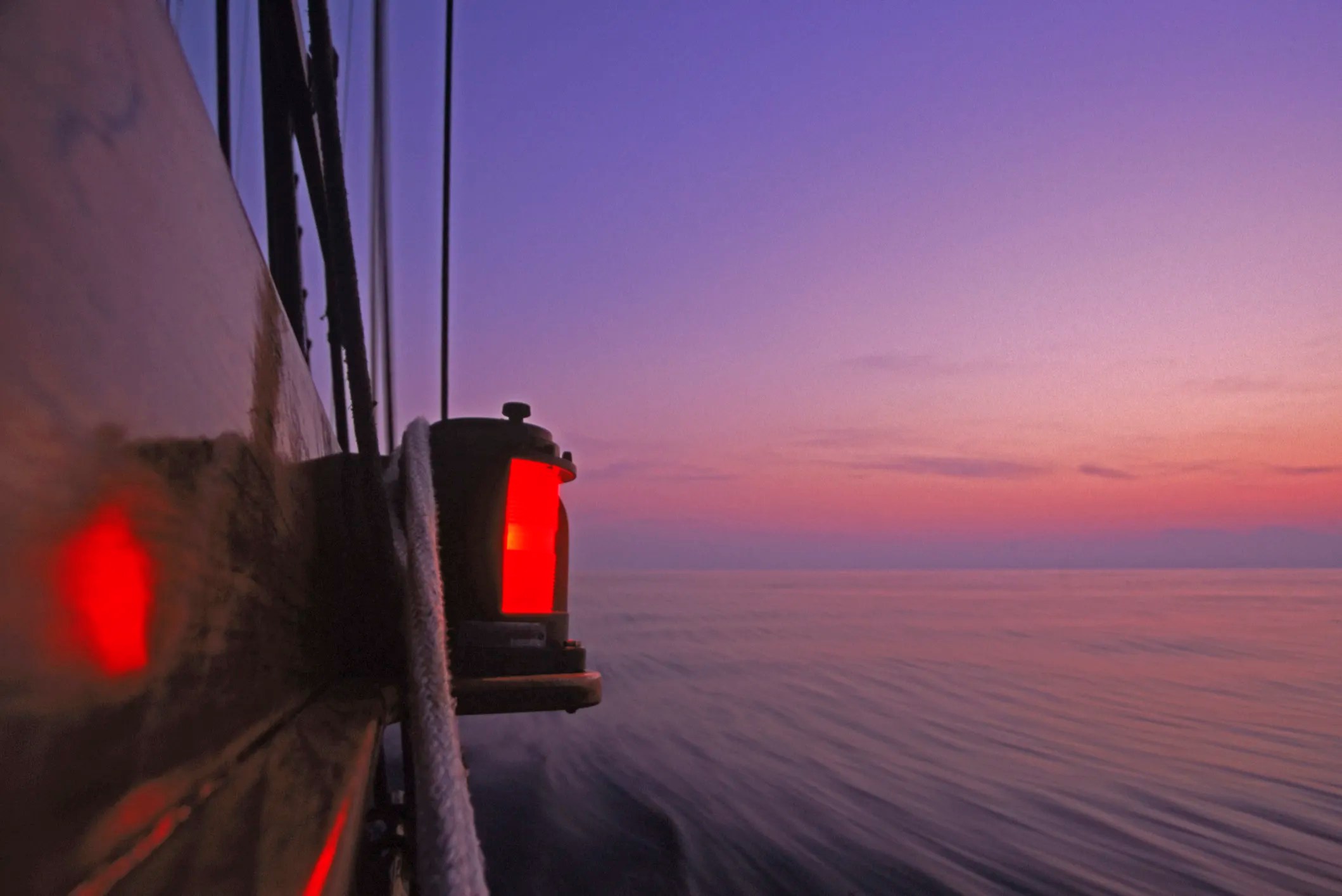ABYC C-5-2-24: Electric Navigation Lights for Boats

Electronic navigation lights are crucial for safe boating, particularly at night and during periods of reduced visibility like fog. These lights allow vessels to be seen by other boats, indicating their position, direction, and status (e.g., underway, at anchor), which overall helps prevent collisions and assures safe navigation. ABYC C-5-2-24: Construction and Testing of Electric Navigation Lights specifies the requirements for navigation lights on boats and yachts.
Early Navigation Lights
The earliest forms of navigation lights can be traced back to ancient civilizations, with records indicating the use of fire beacons on platforms and towers to guide ships. In fact, the lighthouse evolved from those early platform fires, and records indicate that the earliest lighthouse dated from the 5th Century BC. It was located at the harbor of Piraeus, Greece, and consisted of a stone tower with a fire beacon mounted on top to warn ships of hazard and guide them to safe harbors.
Luckily, navigation lights have come a long way from simple fires on hillsides to the standardized, color-coded systems we use today to prevent collisions at sea.
What Is ABYC C-5-2?
ABYC C-5-2-24 applies to the requirements for the design, construction, performance, and testing of electric navigation lights for boats. It emphasizes the increasing use of LED technology for navigation lights. Ultimately, the ABYC C-5-2-24 standard helps assure that navigation lights meet safety and visibility criteria required for safe operation of vessels.
What Are Types of Navigation Lights on a Vessel?
Navigation lights, also referred to as running lights, are a critical tool to keeping passengers and the vessel itself safe. They are essentially colored lights that are electric and are fitted on ships.
- Sidelights: Red and green lights on the ow (front) of the vessel, indicating the direction of travel
- Sternlight: A white light at the stern (rear) of the vessel, visible from behind
- Masthead Light: A white light placed on the mast, visible from the front and sides
- All-Round Light: A white light visible from all directions, often used on smaller vessels or when anchored
These lights are used to identify or specify the size of a boat, the angle where light can be seen by other boats, the direction the ship is navigating, and if the boat is in motion or anchored.
What Makes Navigation Lights Extremely Important?
Bad weather can be a severe threat during navigation in sea waters. As a result, boat owners, sailors, and operators need to display the proper navigation lights from morning to evening in all weather conditions. This helps avoid any miscommunication or collisions while traveling by sea. Since every boat must be fitted with navigation lights, ABYC C-5-2-24 sets guidelines for electric navigation lights for boats.
ABYC C-5-2-24: Construction and Testing of Electric Navigation Lights is available on the ANSI Webstore.






